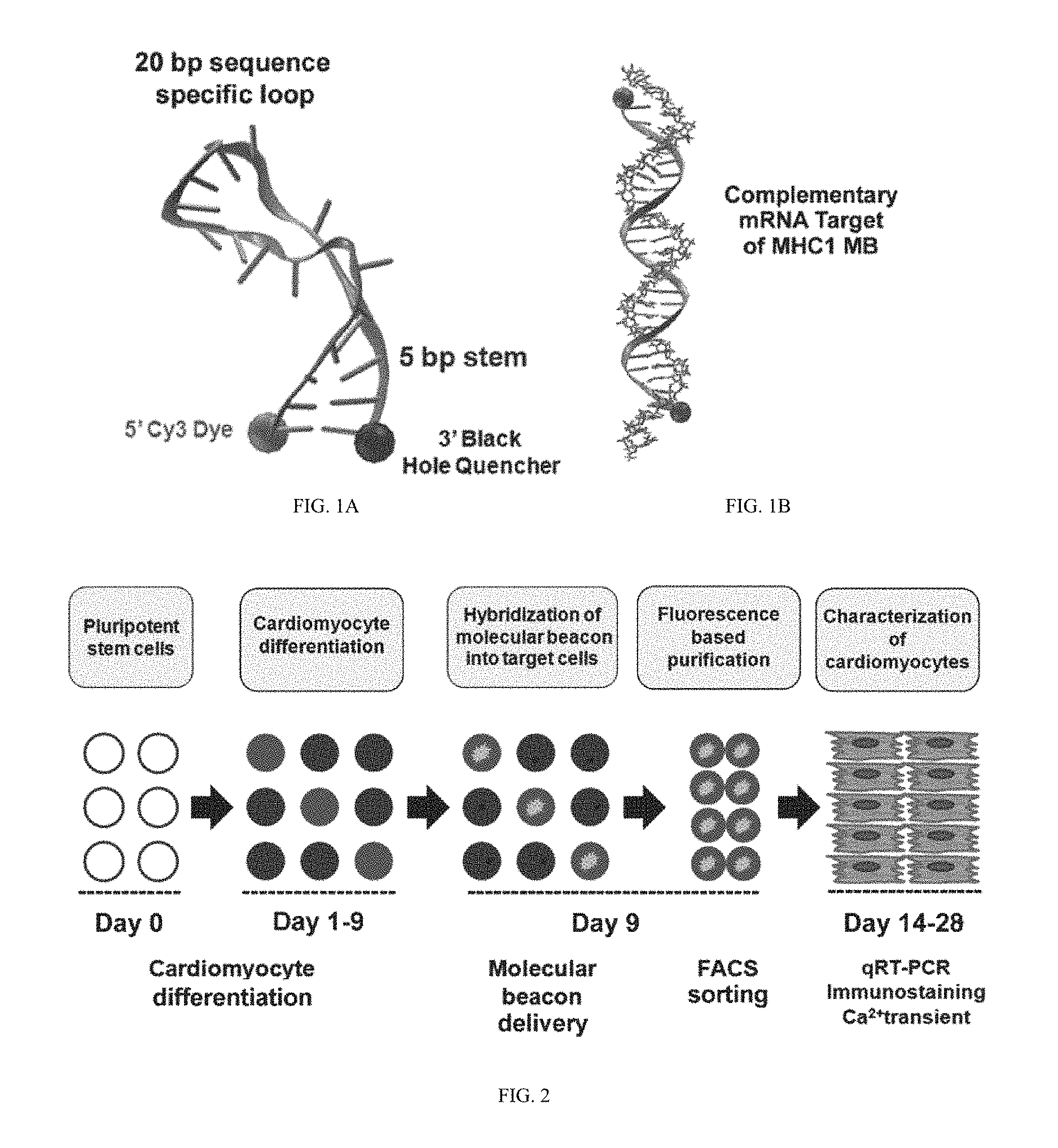Georgia Tech inventors have developed a method of purifying cardiomyocytes from the mixture of cells produced from differentiation of pluripotent stem cells. This method utilizes a nucleobase polymer that fluoresces (a “molecular beacon”) when it attaches to a target nucleic acid (such as RNA, mRNA, or microRNA) in a cell mixture. The molecular beacon is formulated to bind to a complimentary nucleic acid sequence in cardiomyocytes, which causes the cells to fluoresce. They can then be efficiently separated from the rest of the cells in the mixture by a method such as fluorescence activated cell sorting. This technique could also be used to select neuronal cells or pancreatic β-cells, to isolate other types of cells from stem cells, or to produce a pure laboratory cell line of cardiomyocyte.
- Purified cardiomyocytes can be used to regenerate damaged cardiac tissue in vivo
- This method can be used to purify other types of stem cell derivatives
- It can also be used to develop pure laboratory cell cultures for pharmacologic testing and research
- Regenerate destroyed or diseased cardiac tissue
- Research tool- treatments for MS and diabetes
- Study cardiac diseases or identify cardio-active pharmaceuticals
Heart disease kills millions of people every year and costs billions in health care expenses as well as loss of productivity. Heart attacks can cause irreversible cell death and loss of heart muscle tissue. Recent advances in regenerative medicine have enabled researchers to differentiate human stem cells into cardiac cells, which could be transplanted or grafted into damaged hearts to grow into new heart muscle. However, there is currently no method of purifying the differentiated stem cells to obtain only cardiomyocytes without including undifferentiated cells and cells that have differentiated into non-cardiomyocytes, which renders these cells suitable for laboratory research but not for clinical applications.

